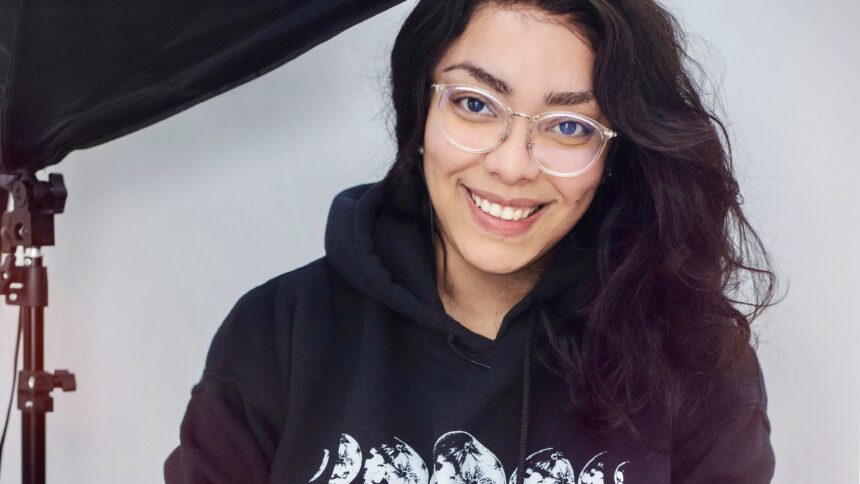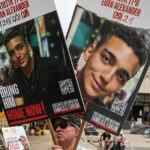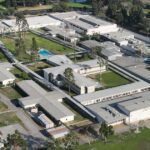“People see me now, and they just assume, ‘oh, she had it easy,'” she says, but Rose Ferreira has had it anything but easy. The trajectory of her life has been so turbulent, in fact, that NASA, her previous employer, published a feature article about her determination on its website. That story chronicles her journey from a poverty-stricken childhood in the Caribbean and years living unhoused, to pursuing her education and rising to become a NASA intern, which ultimately led to working at the space agency full-time.
In January, that article vanished from NASA’s website. As an onslaught of executive orders and directives signed by President Donald Trump sent federal agencies into a frenzy of program cancellations and mass layoffs, NASA’s acting administrator Janet Petro began aligning the agency with the White House’s new laws of the land. That included eliminating any office or program associated with diversity, equity, inclusion and accessibility (DEIA) initiatives.
Note: This article mentions accounts of abuse and sexual assault.
NASA promptly began firing employees affiliated with such efforts and implemented a freeze on all pending hires. The agency also started systematically purging its websites of any instances highlighting diversity and inclusion. Within three days of Trump’s inauguration, NASA’s website for the Office of Diversity and Equal Opportunity (ODEO), its associated pages and any agency page with mentions of DEIA, women in leadership, indigenous peoples, or environmental justice started being removed from the internet. NASA removed language on its Artemis program pages that referenced the agency’s commitment “to land the first woman, and first person of color” on the moon as a part of its Artemis 3 mission — language NASA adopted under Trump’s first administration, and a goal the agency had promoted time and again. The erasure also included a 2021 graphic novel about a Hispanic woman and her diverse astronaut crew’s launch to the lunar surface. On Feb. 6, Ferreira learned NASA’s piece about her had been removed with the rest.
“It’s something that I anticipated was coming,” Rose Ferreira, 39, told Space.com. Still, she said, “it did feel like a slap in the face … it feels like everything that I worked for has been taken down little by little.”
Taken down
Ferreira was in the hospital recovering from pneumonia when she found out NASA’s feature about her had been removed. (It’s back now, but we’ll get to that.)
A school teacher contacted her to ask about the missing page, which many teachers have used as part of their classroom STEM (science, technology, engineering and math) presentations. “As soon as I found out, I just cried. I wasn’t expecting that, to be honest,” Ferreira said. “I was really weak from being sick … it just felt like the punching just kept coming.”
Since the beginning of the second Trump administration, many in Ferreira’s circle at NASA have feared losing their research funding, or even their jobs, due to changes directed by the White House. “People are feeling a little more protective now,” Ferreira said, “like they have to watch what they say, and around who.” The removal of the NASA article and similar pages sent a clear message to Ferreira and others:
“We’re not welcome,” she said.
“My dream was never to work at NASA. I just love space, and I wanted to be in science, so I did anything I could to do that. But once I became an intern at NASA, I realized how much I love it. I have an emotional attachment to NASA.” Ferreira’s first NASA internship was in 2022, at the Goddard Spaceflight Center in Greenbelt, Maryland, where she began meeting people as passionate about space and science as she was.
“If you have people like that — people who are talented, people who work so hard to be a part of it, who want to come in and work for the future of NASA — and you’re basically sending out the message, ‘this is how easy it is for us to erase you. You’re not really welcome here right now.’ Then what are you doing exactly? You’re just keeping talent out and you’re dehumanizing people at the same time.”
Ferreira described the new environment at NASA as tense. People began to fear that contributions to their respective fields may be disregarded on the assumption they didn’t deserve their role if a DEIA program may have played a part in them getting it.
“You don’t just trip and stumble upon these [kinds of opportunities],” she said. “People don’t understand that DEI was created so people like me don’t get pushed out, or just kept out.”
“Some of us work so much harder for the same things,” Ferreira said. “I cannot even take a shower without being grateful for the water, because I didn’t grow up with running water.”
NASA’s feature on Ferreira only scratches the surface of the hardships she faced before reaching her position at the agency. “I understand not everyone wants to hear about hardships,” Ferreira said, though she wonders whether the purpose of highlighting difficult stories gets lost when they’re diluted for the sake of palatability. She said she once turned down a book deal because the publishers also attempted to polish her story by skipping some of its most difficult parts.
Ferreira works hard on softening her accent in the U.S. because once someone hears it, “people always treat me like garbage,” she said. She emphasizes, however, that such vitriol comes from both sides of her cultural divide. In the U.S., she explained, people see a successful woman with a career in STEM, multiple NASA listings on her resume, and assume her path to success was easy. She says people from her country see her in a similar light, but through a different lens. They think she’s had it easy as well. “You’re both wrong,” she said.

Rose
Ferreira is from the Dominican Republic, where over a quarter of the population lives below the poverty line. She describes the neighborhood where she grew up as, “probably one of the poorest in the country.”
For her, education was “learning enough to count the beans,” she said. “You need to learn how to cook, you need to learn how to clean, and you need to get a husband.”
“I refused to do any of that,” Ferreira said.
As a child, Ferreira said she was called a “malcriada,” a Spanish term meaning bratty, or badly behaved. “I just didn’t listen,” she said.
“I thought the universe was just the moon and the sun. That’s it,” Ferreira explained. “I didn’t know anything else.” Her inquisitive nature would eventually lead to her realization that she wasn’t going to get the education she was looking for without making a change. In the environment where Ferreira was growing up, it was clear: “I wasn’t going to get those answers.”
Ferreira was curious about the world around her, and was frustrated when she began running into the same endpoint for any line of questioning. Her persistent probing about the ways of the universe also led to her abuse. “The answer for everything was, ‘God created it,’ and that was never enough for me,” she said. “I caught a lot of beatings for that.”
The physical abuse Ferreira endured as a child didn’t end when her line of questions would stop, however. “I’ve been through, I think, pretty much every kind of abuse that you can think of,” she explained. Ferreira was sexually assaulted from a young age until she managed to legally immigrate to the U.S. around the age of 16.
She moved to New York City, but the abuse followed her across borders. Then she became unhoused. “I was married off really young, and I left my husband. That’s a big no-no in my culture and the way I was raised,” she explained. “Everybody turned their back on me, and I ended up homeless.”
For the next three years, Ferreira lived under a bridge on 96th Street.
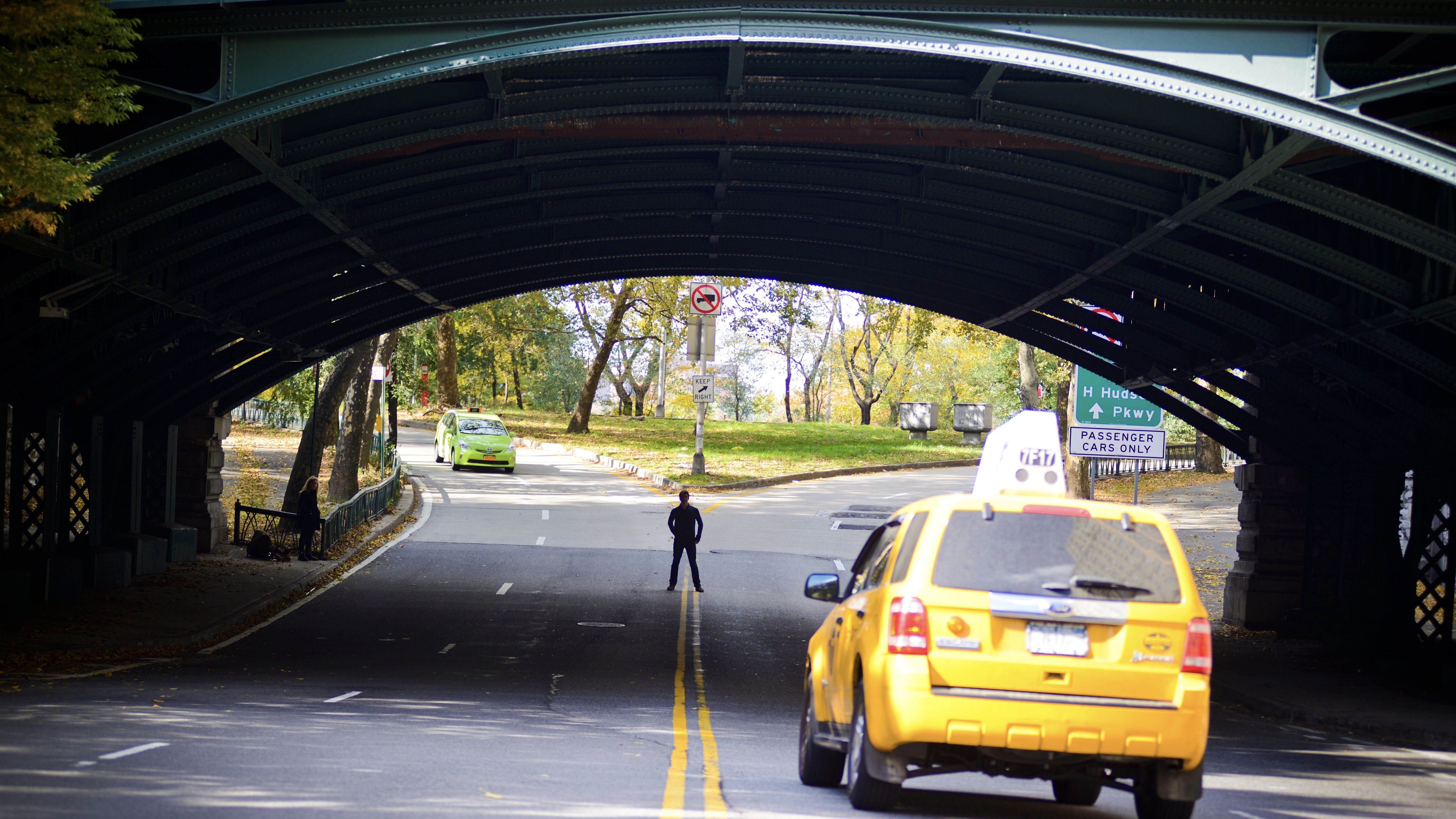
During this time, she said she had no education and barely spoke any English. Ferreira spent her days hopping on and off trains to pass the time, but was desperate to change her situation. One day, she noticed an advertisement on a newspaper she was using to cover herself. A home health aide company was hiring care providers with no prior experience and offered 30 days of training. A month later, Ferreira had a fresh pair of scrubs in hand and began working shifts to save up for an apartment. Eventually, she was able to earn her GED and begin courses at a university.
Ferreira started at Hunter College, where her academic advisor discouraged her from pursuing a degree in science because she didn’t have a math background. They “didn’t want to set me up for failure,” she said. Around 20 years old, but ever the “malcriada,” Ferreira was not to be deterred. “I didn’t listen to anybody. I just enrolled in the classes, and the classes kicked my ass a little bit.” The punches would keep coming.
In 2016, while still working her in-home health aide job, Ferreira was diagnosed with cervical cancer. Then, in 2017, she was hit by a car while walking home from work, which landed her in the hospital. “My life up until 2017 was just working and surviving so I could go to school and get to do space stuff,” she said.
Ferreira left Hunter and began taking remote courses at Arizona State University (ASU) while recovering, and would eventually earn her Bachelor’s degree in astronomy and planetary sciences. Her coursework at ASU led to her first fellowships at NASA, two subsequent internships at the space agency, and, ultimately, her full-time employment. She has also since earned a Master’s degree in space systems engineering from Johns Hopkins University, in Maryland.
While in recovery, faced with decreased mobility and limited resources, a friend suggested Ferreira turn to social media for advice about her situation. Her Twitter posts about her circumstances turned into long threads of explanation, as descriptions of her struggles began to grow into conversations online. She quickly gained a following, and found a community.
“I opened an account as a joke. I started talking about my life a little bit. To me, those struggles were normal. Getting chased by rapists on the street, sleeping under a bridge — that stuff was normal to me,” Ferreira said. Her openness online led to speaking engagements at various events, which quickly led to her involvement in outreach and activism for STEM education in disenfranchised communities.
She focused on helping schools find ways to make science more interesting and accessible, and providing resources for children coming from schools without science programs. Ferreira says she is motivated to do this work because of her non-traditional path to becoming a scientist: “I want people to know, ‘oh, maybe if she can do it, I can do it.'”
When Ferreira was an intern at Goddard, she worked on the team that helped release the first deep field image from the James Webb Space Telescope, and had the chance to record a Spanish voice-over for one of NASA’s This Week at NASA videos. She was mentored by Thomas Zurbuchen, former associate administrator for NASA’s Science Mission Directorate, and had the opportunity to shadow him at NASA headquarters. It was 2022, the year NASA would publish their feature about Ferreira. That same year, she was also honored as a Brooke Owens Fellow for her STEM outreach. Ferreira was hired full-time at the space agency as an analyst in the beginning of 2024.
“They had a big focus on opening opportunities for people, for women, who normally wouldn’t get the chance,” Ferreira said of the fellowship. “For me, that meant opening doors into aerospace.”
Ferreira became so successful in her STEM activism that she was honored at the White House in 2024 as a Young Hispanic Leader in the Space Industry. Just a few months after receiving that honor, Trump was elected President.
Agency
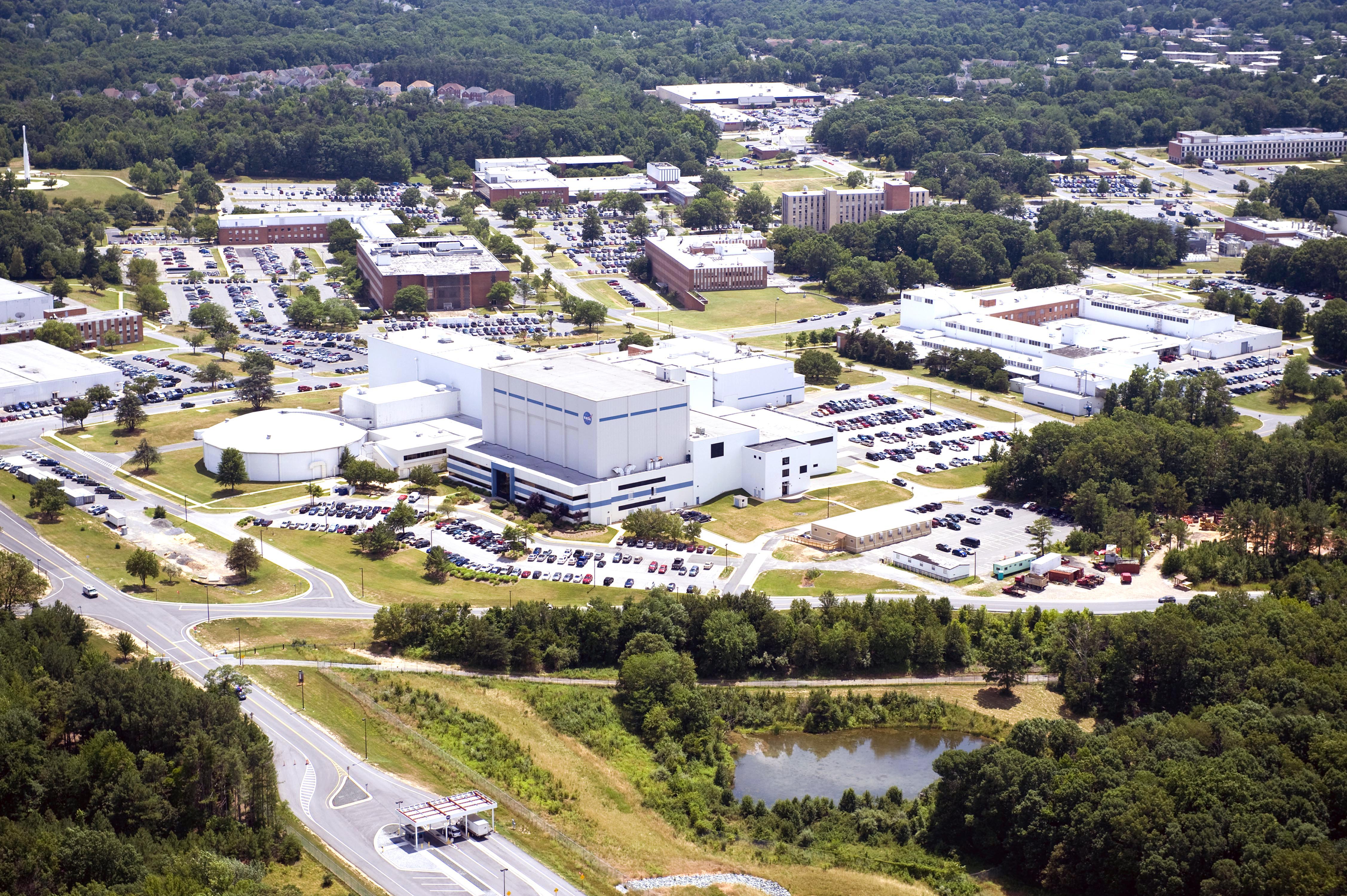
Ferreira said some departments within NASA began holding meetings within weeks of Trump’s election to reassure employees and give them peace of mind — but also to subtly stress the importance of highlighting their value to the agency.
“The mood started changing,” she recalled. “Even the language that was being used in some of our internal emails.” NASA water-cooler talk quickly turned to speculation, rumors and stories of people losing their jobs.
“By comparison,” Ferreira said, “the page thing sounds small — but to me, because of the background that I have and where I came from, and the things that I had to do to get to where I am, it felt like a really big punch.” Still, she doesn’t quite blame NASA for the website censorship.
“This is not really about NASA. This is just about what this represents,” she said, pointing out that the people who scrubbed NASA’s webpages are likely just doing their jobs. “That’s not easy,” she added, “losing your job or not having a means to keep a roof over your head.”
There are also still people at NASA who Ferreira sees as family. A mentor and colleague who she said feels like her “surrogate father” has worked at NASA for the better part of four decades.
“When I was an intern for the first time, I was staying at a really dangerous place in D.C.,” she explained. “He heard that I was dealing with stuff, and his wife asked if it was okay for me to stay at their home,” Ferreira said. “From then on, these people became my actual family.”
Right now, Ferreira is grateful for the certainty family can bring.
“We have a very uncertain four years coming up, and everybody’s scared,” she said. When Ferreira learned NASA removed her article from its website, while in the hospital during her bout with pneumonia, she turned again to social media. She posted on Threads about the deletion of her page, and it went viral. The post has received over 85,000 likes and has been shared more than 11,000 times.
Post by @rose_d_luna
View on Threads
The news spread quickly. Ferreira’s colleagues at NASA began reaching out. People were outraged, or apologetic, or they wanted to know how she was handling it all. “It’s just been constant,” she told Space.com at the time.
Within days, as a polarized internet debated her situation in the comment section of her Threads post, Ferreira’s story on NASA’s website was suddenly restored. No one from NASA contacted Ferreira in any official capacity to inform her about what was going on, either before it was taken down or after it was put back online.
Pneumonia prevented her from returning to her job at NASA for another few weeks — and when she did, it wasn’t easy. The weight of the tense atmosphere compounded her nervousness about her viral post: “I feel like at any moment I’m just gonna get the boot.”
The boot
Ferreira was declared pneumonia-free on Feb. 21, a Friday, and given her doctor’s approval to go back to work. She returned the following Monday. On Wednesday — 20 days after she first posted about her NASA page being taken down — she was fired.
She said she immediately knew what was happening when she walked into her weekly one-on-one with her supervisor; the meeting had an unexpected attendee. An HR representative rose from a seat in the corner as Ferreira entered the office. She was told she was being let go because she wasn’t fulfilling her position’s responsibilities, “effective immediately.”
“When I was about to open my mouth, she waved her hand at me, and was like, ‘No, we’re not doing that,'” Ferreira said. “I’m hearing ringing in my head.”
“They didn’t let me speak in my own meeting.”
Ferreira, wrapped in thick armor forged from a life of perseverance, is rarely brought to tears in front of others. This was not going to be the exception.
She was escorted back to her desk, to the surprised looks of her coworkers, where she was told to collect her things before being led out of the building. “I personally felt like a criminal,” she said. Ferreira kept her composure until she arrived back home, where she finally dropped her armor and broke down in tears.
“These are people that I trusted.”
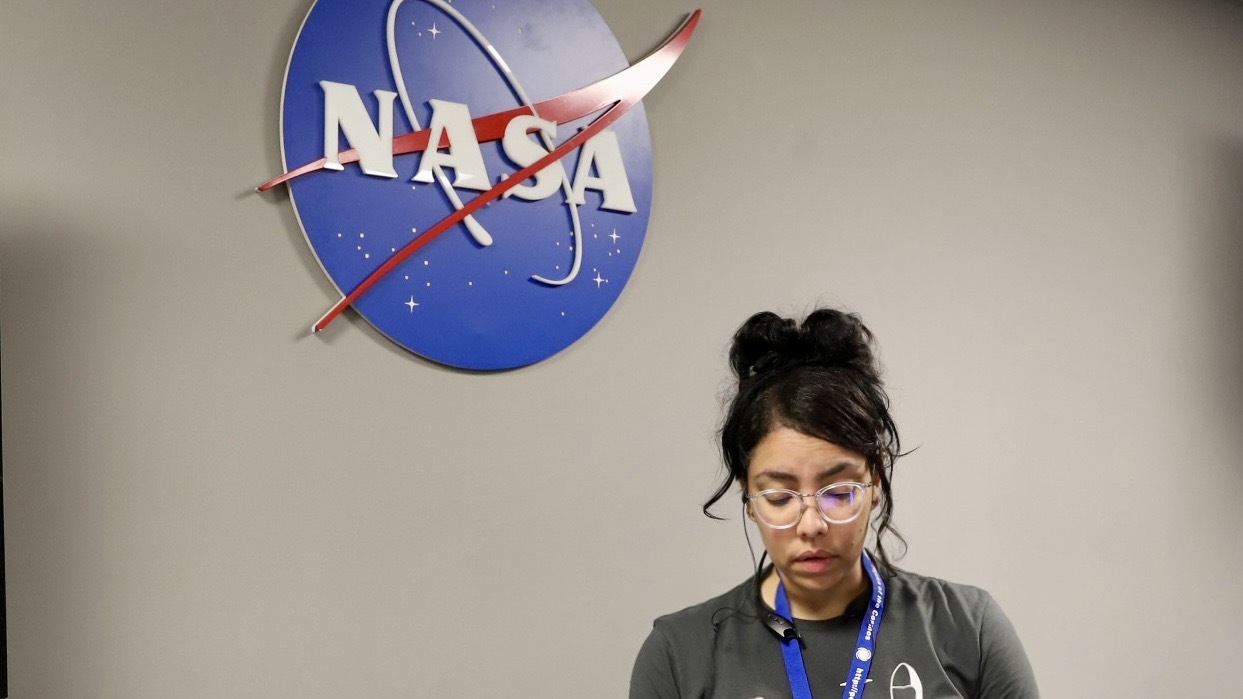
Moving on
NASA said the space agency “does not comment on personnel matters” when we reached out for a statement on Ferreira’s dismissal. Ferreira was within her provisional employee period at NASA — a group targeted by the Department of Government Efficiency (DOGE) spearheaded by SpaceX CEO Elon Musk to downsize the federal workforce — but was not told that was the reason she was let go. And, in fact, the White House informed NASA Feb. 19 that the agency’s provisional employees would be exempt from the “impending layoff plan.”
In the weeks since her firing, things at the space agency do not seem to have markedly improved. Reports of suggestions made to NASA employees to purge their workspaces of LGBTQI+ symbols have emerged alongside claims of outright bullying over coworkers’ Pride decorations.
Ferreira heard those rumors, too. “I don’t think all facilities are like that,” she said. “Every facility has its own cultural identity.”
Meanwhile, NASA continues progress toward shrinking its personnel and resources during one of the agency’s most active periods since its space shuttle program was assembling the International Space Station. A 2026 budget proposal released by the Trump administration on May 2 calls for a 24% reduction to NASA’s budget. Ferreira doesn’t see how the space agency will continue to survive with those kinds of cuts. “When you see it from the inside, you realize how little NASA actually gets, and how much they do with it,” she said.
Even NASA’s most recent administrator, former Senator Bill Nelson (D-Florida), is worried about the direction the space agency is headed. “The first person that was fired at NASA two months ago was the Chief Scientist and Chief Climate Officer,” Nelson said during an event in Washington, D.C. in April. “I think we need to be concerned about that.”
Petro, NASA’s Acting Administrator, has worked to steer the boat since Nelson’s departure, but admits times at NASA have been “weird” lately. She said last month that she is more eager than anyone to see the new NASA administrator be confirmed.
A vote to confirm Trump’s pick for that role — billionaire entrepreneur and private astronaut Jared Isaacman — was recently forwarded to the Senate by the Committee on Commerce, Science, and Transportation. If confirmed, Isaacman stands to inherit a space agency facing the largest cut to its funding in history, according to the nonprofit Planetary Society.
For Ferreira, she’s not looking to return to space anytime soon.
“Part of me hopes that I can go back in a few years, because my plan was just to retire at NASA,” she said. In the meantime, Ferreira is refocusing her attention on her activism and outreach to underserved communities. “I got so focused, I stopped doing outreach completely when I went into NASA, and the only outreach I was doing was within the agency.
“I felt like I needed to go back to this to give me hope in humanity again.”



